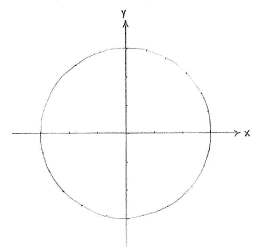Lösung 4.1:6a
Aus Online Mathematik Brückenkurs 1
(Unterschied zwischen Versionen)
K (hat „Solution 4.1:6a“ nach „Lösung 4.1:6a“ verschoben: Robot: moved page) |
|||
| Zeile 1: | Zeile 1: | ||
| - | + | Wir schreiben die Gleichung des Kreises wie | |
{{Abgesetzte Formel||<math>(x-0)^2 + (y-0)^2 = 9</math>}} | {{Abgesetzte Formel||<math>(x-0)^2 + (y-0)^2 = 9</math>}} | ||
| - | + | Die linke Seite der Gleichung ist die Quadrate des Abstandes zwischen den Punkten (''x'',''y'') und (0,0). Also soll der Abstand zwischen (''x'',''y'') und (0,0) <math>\sqrt{9}=3\,</math> sein, und dies ist also der Radius des Kreises. | |
<center> [[Image:4_1_6_a.gif]] </center> | <center> [[Image:4_1_6_a.gif]] </center> | ||
Version vom 17:27, 2. Apr. 2009
Wir schreiben die Gleichung des Kreises wie
| \displaystyle (x-0)^2 + (y-0)^2 = 9 |
Die linke Seite der Gleichung ist die Quadrate des Abstandes zwischen den Punkten (x,y) und (0,0). Also soll der Abstand zwischen (x,y) und (0,0) \displaystyle \sqrt{9}=3\, sein, und dies ist also der Radius des Kreises.

